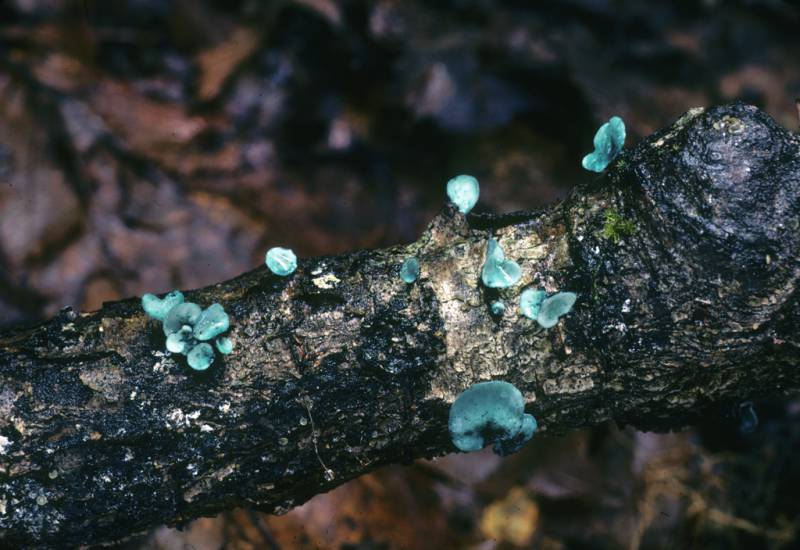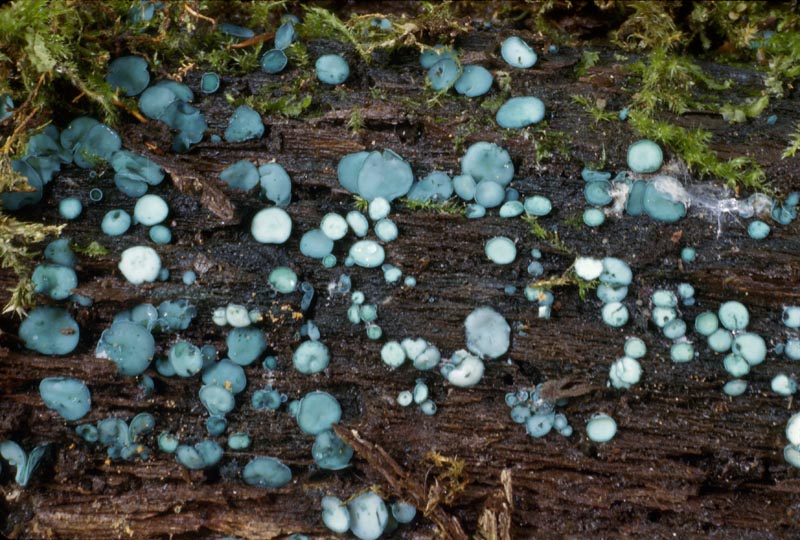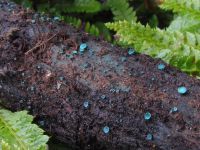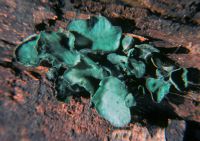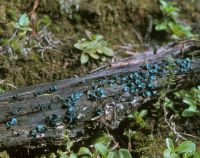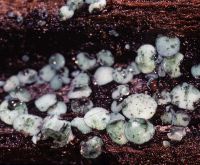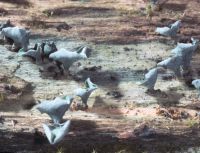Distribution: Broad Across North America, Europe, and Asia
Spores: spores (5--8 x 1--2 µm)
Conservation Status: Not of concern
The turquoise to greenish or olivaceous color of the small cups makes Chlorociboria aeruginascens and the very similar C. aeruginosa (Oeder) Seaver quite distinctive. Both grow on rotting barkless wood in a wide variety of forests. Even when not fruiting, the presence of the fungus is advertised by the turquoise color imparted to the wood by its mycelium. This wood has been prized by wood-workers for use as a decorative inlay material. C. aeruginascens is characterized by larger fruitbodies (up to 7 mm (0.25 in.) across) that often arise several from a common base, flesh that is the same color as the exterior of the cup, and small spores (5--8 x 1--2 µm), whereas C. aeruginosa has smaller fruitbodies (<5 mm (0.2 in.) across) that usually arise singly, yellow-orange flesh, and larger spores (9--14 x 2--4 µm). The two species are frequently confused so it is difficult to specify their ranges; however, one or the other or both occur across North America and in Europe and Asia.
Sources: Trudell, Steve and Joe Ammirati. Mushrooms of the Pacific Northwest. Portland, Timber Press, Inc. 2009.
PNW Herbaria: Specimen records of Chlorociboria aeruginascens in the Consortium of Pacific Northwest Herbaria database
CalPhotos: Chlorociboria aeruginascens photos

